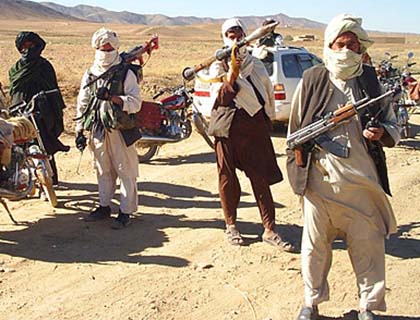The intensive anti-insurgency campaign going on in the northern provinces of the country by the Afghan National Security Forces (ANSF) is emerging to be successful in repelling the Taliban offensive in the north. According to media reports, over 40 Taliban fighters have been killed in Qaisar district of Faryab while elsewhere more than 20 militants have been killed in Pul-e Khomri district of Baghlan province. Recently, First Vice President Gen Abdul Rashid Dostum, who has been in Faryab in recent weeks to lead the ANSF operation, said that he has had cleansed eighty percent of the province from Taliban and Islamic State militants. The Vice President indicated his willingness to lead the operation against the Taliban and the Islamic State in other northern provinces. He said if the central government in Kabul agrees, he would lead the operation being conducted by Afghan National Security forces in Kunduz province. He stressed that the campaign under his oversight is not the ‘war of Faryab, Qaisar or Almar’, but it is the war for salvaging Afghanistan.
The military operation that the First Vice President is leading in the northern province of Faryab is seen as a milestone in the anti-Taliban war efforts led by Gen Dostum, a prominent former military commander and a key figure in the government. The military operation launched in the Northern provinces in recent months had become a lagging war effort to push back the Taliban offensive and curb the growing insecurity in the north. However, despite the successes of the Afghan army and police forces in Northern provinces, the Taliban continued to wage violence in large parts of the north of the country. The prolonged violence drew much criticism to the war strategy of the National Unity Government (NUG) against the bloody summer offensive of the Taliban across the country particularly in the north. The Taliban managed to expand the group’s annual offensive in large parts of the north including Faryab, Kunduz, Badakhshan, Baghlan and other provinces.
The Afghan army and police forces have performed remarkably in countering the Taliban, depriving them of capturing and controlling key areas for longer time.
The situation in the north will remain the national unity government’s Achilles’ heel in dealing with the growing instability in the country at a difficult time. Given the fact that thousands of foreign militants have come to Northern provinces, the government needs to focus on the war going on the north of the country.
From the very beginning, the Taliban’s spring offensive in north became a test of the central government’s will in efficiently leading the war against the insurgent groups. The militants’ offensive in the North has demonstrated a different, and much complicated war strategy focusing on shift of war ground from south the north. The Taliban has been seeking a strategic military gain against the Afghan government by expanding the war into the Northern provinces. The government of Afghanistan has had relatively weak military presence in the north in the past years and security coverage in the Northern parts of the country was largely insufficient due to focus of the war efforts on the south. For most of the past fourteen years of the fight against the Taliban, the southern and eastern provinces have been the battlefield of war between the Taliban and the US forces along with the Afghan security forces. The Taliban has fought for the last fourteen years and have considerable capability in taking advantage of the Afghan government’s security and defense weaknesses. The ongoing war in the Northern provinces would define the government’s success in the fight against the insurgent groups not only in the north but across the country.
The government needs to intensify the campaign against the insurgent groups in Northern provinces to break the heightened momentum of the insurgency this year. The Taliban have had some gains in the north through expanding their spring offensive in vulnerable provinces of the North. The war in the north would be a key test for the Afghan government forces to effectively counter the Taliban and contain the fresh wave of the insurgency. Given presence of hundreds of foreign fighters in the country this year, there is a chance for the Taliban to join forces with other minor terrorist groups including the Uzbeks, Arabs and the Chechens to bolster their presence against the government of Afghanistan. The government of Afghanistan formally believes that the foreign militants, and the Islamic State group in particular, are interested for taking ground in Afghanistan so to expand their activities beyond Afghanistan’s border into the North. The government of Afghanistan needs to boost the anti-insurgency in the north to prevent various militant groups to struggle for finding a safe haven in Northern Afghanistan.
For this, the government needs to boost its support to the ANSF campaign in the Northern provinces led by Gen. Abdul Rashid Dostum. The First Vice President’s presence in the northern Faryab provinces is believed to have revived the lagging military efforts against the insurgent groups, forcing the militants to treat with heavy losses in many localities of the province. Dostum’s presence in Faryab has boosted morale of the Afghan army and police forces. The government needs to deal with the war in the North as its top priority and extend the operation oversaw by the First Vice President into other northern provinces. The anti-insurgency in the north needs a new approach and more effective leadership for which Gen. Dostum is the right person.

